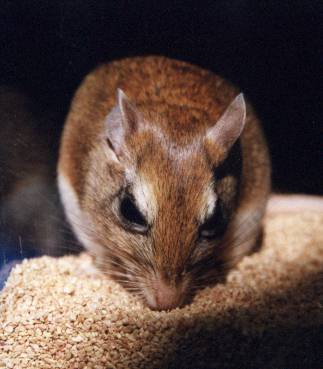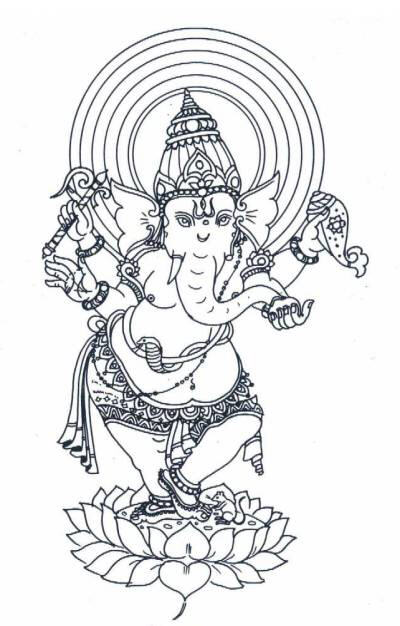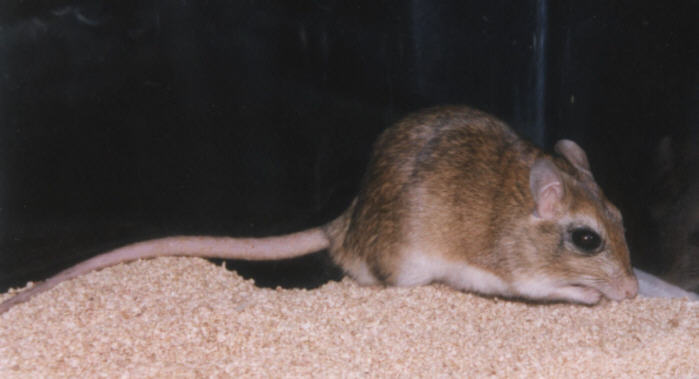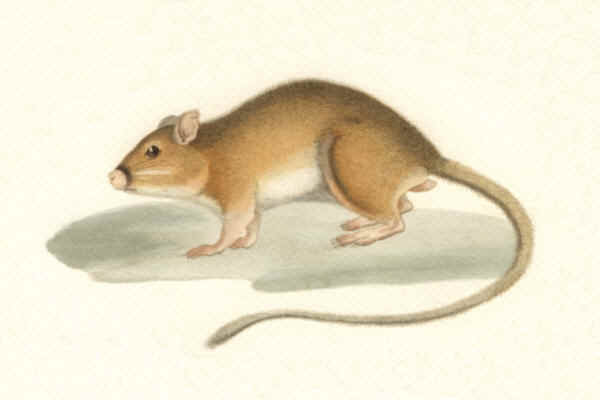Introduction
The Indian Gerbil (Tatera indica), also called "The
Antelope Rat", is the commonest gerbil in the Indian sub-continent. It
occupies the sandy plains and grasslands of India, Sri Lanka, Pakistan and
extends into southern Iran and as far west as Iraq, Kuwait and eastern Syria. To
the north Indian Gerbils extend into Afghanistan and Nepal.
It is one of the largest species of gerbil, up to 430mm long
from head to the tip of the tail. The tail is slightly more than half of the
total length. It is reddish brown to fawnish grey in colour and has a whitish
belly. There are light coloured or white spots above and behind the eyes and
ears and on the sides of the nose. The tail is dark on both the top and bottom
surfaces and has a light brown band down each side. There is a small black tuft
at the tip. The fur of the body is long and thick. That on the tail is sparse,
only just covering the scales of the tail. The soles of the feet are hairless,
as are the long ears, which are usually over 20mm in length. Adults generally
weigh between 100 and 227g. Males are normally a little larger than females.
Habitat
This gerbil's preferred habitat is almost anywhere that is not
too sandy, or too cold. For example, the limit of their habitation matches
closely the southern limit of winter frosts. Although dry plains are preferred,
there is almost no type of habitat that these gerbils will not occupy if there
is suitable food.
In India, Indian Gerbils are very common in areas of human
habitation and in Iraq and Syria it is almost only found near villages. In Iran
they live more remotely in areas with green vegetation all year round. In
Afghanistan they are found near to isolated buildings on the edges of
semi-desert areas and in dry stream beds. As high altitude brings colder
temperatures they become rarer as the ground rises. In true desert areas such as
Rajasthan they avoid shifting sand dunes and prefer the firmer plains.
In India burrows of Indian Gerbils have been found alongside
main streets in the towns, and even in the granaries of the major cities of
Pakistan. In Indian Villages they often burrow into hedgerows and mud walls that
border the fields.
In the deserts of Northwest India the Indian Gerbil often lives
alongside the Indian Desert Gerbil (Meriones hurrianae). This species
prefers drier, sandy habitats. The difference between the two species can be
seen by the way that M. hurrianae is more common in cultivated fields
that are not irrigated, whilst T. indica is more common where the fields
are irrigated.
Diet
Indian Gerbils are omnivorous and will readily eat insects and
meat if offered. Outside the monsoon season Indian Gerbils eat mainly seeds
supplemented by leaves, roots and insects. As the supply of seeds drops during
the period of rains the number of available insects increases and the gerbils
take advantage of this by increasing the proportion of these they take in their
diet until if forms a significant percentage (40%). Indian Gerbils have been
known to kill and eat smaller mammals, they also will live in orchards feeding
on the seeds of the trees and the growing saplings.

Behaviour and Ecology
Gestation is 26-30 days. Four to six young open their eyes at 14
days. The young are independent at 21-30 days and reach sexual maturity in 10-16
weeks. The number of Indian Gerbils vary for month to month. Numbers are lowest
in January, but increase steadily from March onwards by as much as 250% in
September. This means that the population reaches its peak during the months of
Monsoon. The Indian Desert Gerbil does the opposite with the highest numbers
being in the driest months around January. In the wild the Indian Gerbil breeds
all year round but peaks in February, July, August and November. The oestrus
cycle is just under five days. Litter size is 1-10 with five or six being most
common.
Tatera Indica are adventurous creatures and are very easy to
trap. On one occasion researchers found seven gerbils in a single trap that was
only 300x150x150mm and had not even been baited. On release, several of these
gerbils had again been trapped within half an hour.
This gerbil can be a serious pest in areas where grain is stored
or processed. They are dreaded by farmers because of the damage they do to crops
by feeding on sown seeds, sprouts, mature plants and the ears of corn. They will
fell standing corn to get at the seed heads.
Because of the terrible damage that Indian Gerbils do to the
crops of poor farmers a lot of effort goes into studying this species and
finding ways of controlling the population. On the other hand, the large number
of insects eaten by Indian Gerbils in the south of India is considered by some
researchers to make their presence a net benefit to mankind.
Indian Gerbils are very nocturnal and do not normally move far
from their burrows. Sixty meters being the furthest observed in one study with
many gerbils not moving more ten metres.
They live in loose communities. Each gerbil has a home range,
but these ranges freely overlap with those of other gerbils. Except when raising
young each burrow normally is occupied by one gerbil who will defend it against
intruders. But in an emergency a gerbil will take temporary refuge in a
neighbouring burrow. Although they live in their own burrow Indian Gerbils
engage in social activity with other gerbils, they will chase, box and wrestle.
Indian Gerbils produce simple burrows. Usually consisting of
several entrances drooping steeply down one to three feet to a single chamber.
Burrows often have a "bolt hole". A tunnel ending a few millimetres
from the surface. In an emergency the gerbil can break through this thin crust
of soil and escape from the burrow if cornered.
Predation is mainly by birds of prey such as owls and kites. The
Asian Jackal (Canis aureus aureus) will sometimes hunt gerbils although
it prefers hares and larger mammals. Although snakes and monitor lizards will
sometimes take gerbils, as will cats and foxes, studies of stomach contents show
that gerbils are only very rarely taken by these animals.
Females, and even older youngsters, can be cannibalistic.
Especially if disturbed when the litter is very young. Being a very aggressive
species with known carnivorous tendencies it is thought that in the wild large
numbers of young are killed by other Indian Gerbils when they first leave the
burrow.
In Captivity
The Indian Gerbil was once widely kept in the UK but fell from
grace when the Syrian Hamster became a common pet in the 1950s. A few have
appeared in captivity in this country and Northwest Europe in recent years. Some
have even found their way into zoological collections. In captivity they have
been kept successfully on a dry mix diet supplemented with green vegetables.
They have been known to live up to seven years in captivity. I have heard people
say they are an easy to handle and tame animal, although a little nervous when
raising a litter. However, the ones I once saw in The Netherlands seemed timid
and looked like they would bite first and ask questions afterwards
And Finally
In Southern India and Ceylon the Indian Gerbil is dug out of its
burrows as a source of food, but in the north the animal is thought too small to
be worth eating. The Indian Gerbil is also taboo to many Hindus as it is
considered "A vehicle of Lord Ganesh".

This image of the Hindu deity, Ganesha, "The remover of
obstacles", taken from Mohan's Hindu
Image Gallery, shows, at his feet, his "vehicle", or sign, a small
rodent known as Mooshika Vaahana.
References
RODENTS OF ECONOMIC IMPORTANCE IN INDIA, Barnett S A, Prakash I,
Arnold - Heineman, 1975
THE MAMMALS OF ARABIA (Second Edition), Harrison DL, Bates PJJ,
Harrison Zoological Museum Publication, 1991
THE HANDBOOK OF RODENTS IN CAPTIVITY, Henwood, Chris, 1985
THE MAMMALS OF INDIA, Jerdon T C, Thomason College Press, 1867
MANUAL OF THE MAMMALS OF SRI LANKA. PART I-III. 2nd Revised
Edition, Phillips, W.W.A., Wildlife and Nature Protection Society of Sri Lanka,
1980
RODENTS IN DESERT ENVIRONMENTS, Prakash, L and Gosh, P.K.
(volume editors)., Dr W. Junk b.v. Publishers, The Hague., 1975, 90 6193 080 4
(Chapters III, IV, V and X)
THE BOOK OF INDIAN ANIMALS, Prater, S.H., Bombay Natural History
Sci, 1980
THE MAMMALS OF PAKISTAN (REVISED EDITION), Roberts, T.J., Oxford
University Press, 1997
MAMMALS OF NEPAL, Shrestha K, Mrs Bimala Shreastha. Katmandu, 1997
Here is a hand coloured illustration of an Indian Gerbil from "Le Règne
Animal distribue d’Apres son organization" by George L.C. Cuvier
published in 1837.
Click on it for a view of the full page with three other species of rodent,
including the Meadow Jumping Mouse, and two species of Packrats.
The views presented on this page are not necessarily those of the National
Gerbil Society.
Please note that the material on these webpages is covered by copyright law.
If you wish to use any pictures etc for anything other than your personal
private use, such as publishing material on a website, then
This web page may include links to other web sites. These links are provided
in order to enhance the interest and usefulness of other content and are not
intended to signify that the National Gerbil Society, or the authors of material
featured on the NGS Website, endorses or otherwise has any responsibility for
the content of any linked web page, web site or other linked material.




